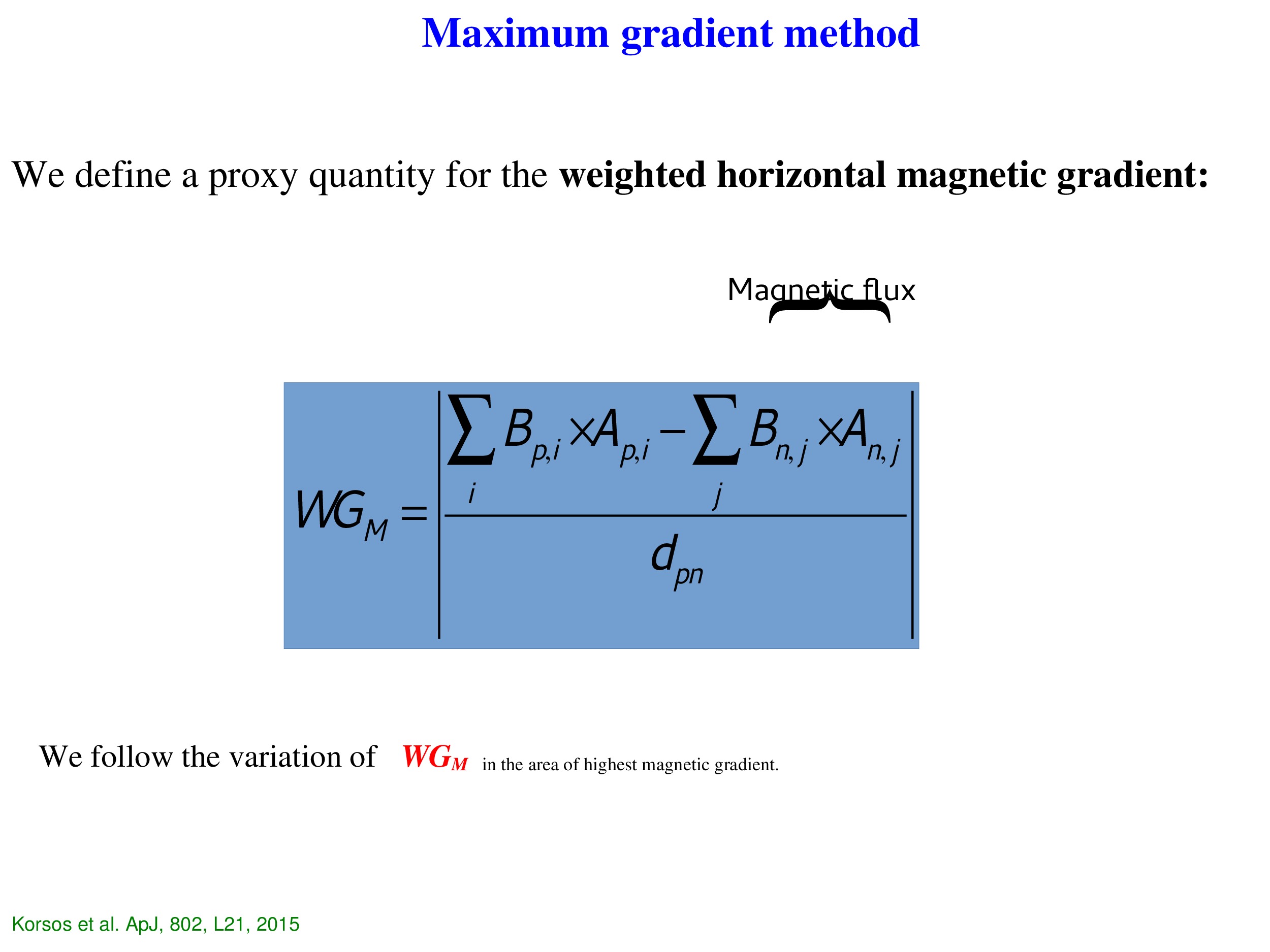Affiliation
DHO, Hungary and SP2RC, Sheffield, UK
Main category
Natural Sciences (Astrophysics and Astrononmy)
Abstract
The most probable sites of flare onset are the regions of high horizontal magnetic �led gradients in ARs. Flare and CME forecast methods are based on magnetograms. Our objective is a new type of measure for the description of non-potentiality by using the detailed Debrecen sunspot data catalogue. This catalogue enables us to follow the evolution of the internal magnetic con�guration of the ARs in high spatial and temporal resolution.
Next, our aim is to carry out a detailed statistical analysis of the photospheric cursors of pre-flare and pre-CME dynamics of a large sample of sunspot groups observed by SOHO/MDI and SDO/AIA to further develop, improve and validate the prediction method developed by Kors�os et al. [2015b,a].
To make a leap forward in Space Weather forecast, we will generalise our forecast method, by applying it to the Interface Region and low corona in 3D, in order to identify the optimum height for flare/CME lift-o�ff prediction in the solar atmosphere. Here, we expect to considerably increase the forecast capability,
with having massive practical implications in our high-tech-driven world. Speci�cally, we aim (i) to investigate the pre-flare/CME dynamics and the related physical processes in the 3D solar atmosphere by constructing the magnetic topology above ARs (see Figure 4), and (ii) to track their temporal evolution by applying WGM and the shear and twist motion of opposite polarity of sunspots before
flare and CME.
We tested the idea by investigating AR 11158. The active region produced M6.6 energetic flare on 13/02/2011 at 17:28 and X2.2 flare on 15/02/2011 at 01:44. We track the temporal evolutionWGM, distance and net flux at various heights. We demonstrate that the starting time of the converging phase changes as function of height. We found that at about 1 Mm level the converging starts much earlier than at the photosphere or at other heights. If we are able to identify the optimum height in the solar atmosphere for flare/CME lift-off� then may considerably increase the forecast time. This would be a signi�cant progress.
Do you have problems viewing the pdf-file? Download presentation
here
If the presentation contains inappropriate content, please
report the presentation. You will be redirected to the landing page.
